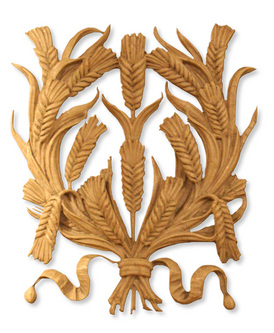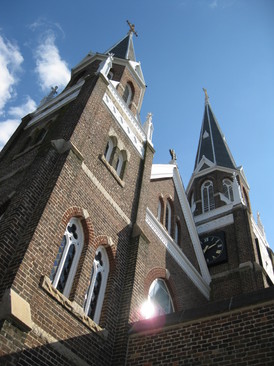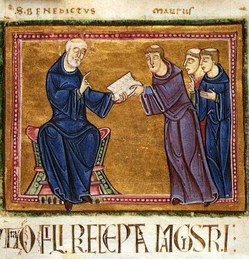Commentary on the Book of Numbers
Saint Cyril of
As the first-fruits of our renewed humanity, Christ escaped the curse of the law precisely by becoming accursed for our sake. He overcame the forces of corruption by himself becoming once more “free among the dead.” He trampled death under foot and came to life again, and then he ascended to the Father as an offering, the first-fruits, as it were, of the human race. “He ascended,” as Scripture says, “not to a sanctuary made by human hands, a mere copy of the real one, but into heaven itself, to appear in God’s presence on our behalf.” He is the life-giving bread that came down from heaven, and by offering Himself to God the Father as a fragrant sacrifice for our sake, he also delivers us from our sins and frees us from the faults that we commit through ignorance.
 The human race may be compared to spikes of wheat in a field, rising, as it were, from the earth, awaiting their full growth and development, and then in time being cut down by the reaper, which is death. The comparison is apt, since Christ Himself spoke of our race in this way when He said to His holy disciples: “Do you not say, ‘Four months and it will be harvest time?’ Look at the fields I tell you, they are already white and ready for harvesting. The reaper is already receiving his wages and bringing in a crop for eternal life.”
The human race may be compared to spikes of wheat in a field, rising, as it were, from the earth, awaiting their full growth and development, and then in time being cut down by the reaper, which is death. The comparison is apt, since Christ Himself spoke of our race in this way when He said to His holy disciples: “Do you not say, ‘Four months and it will be harvest time?’ Look at the fields I tell you, they are already white and ready for harvesting. The reaper is already receiving his wages and bringing in a crop for eternal life.”
Now Christ became like one of us; He sprang from the holy Virgin like a spike of wheat from the ground. Indeed, He spoke of Himself as a grain of wheat when he said: “I tell you truly, unless a grain of wheat falls into the ground and dies, it remains as it was, a single grain; but if it dies its yield is very great.” And so, like a sheaf of grain, the first-fruits, as it were, of the earth, he offered Himself to the Father for our sake.
For we do not think of a spike of wheat, any more than we do of ourselves, in isolation. We think of it rather as part of a sheaf, which is a single bundle made up of many spikes. The spikes have to be gathered into a bundle before they can be used, and this is the key to the mystery they represent, the mystery of Christ who, though one, appears in the image of a sheaf to made up of many, as in fact he is. Spiritually, He contains in Himself all believers. “As we have been raised up with Him,” writes





